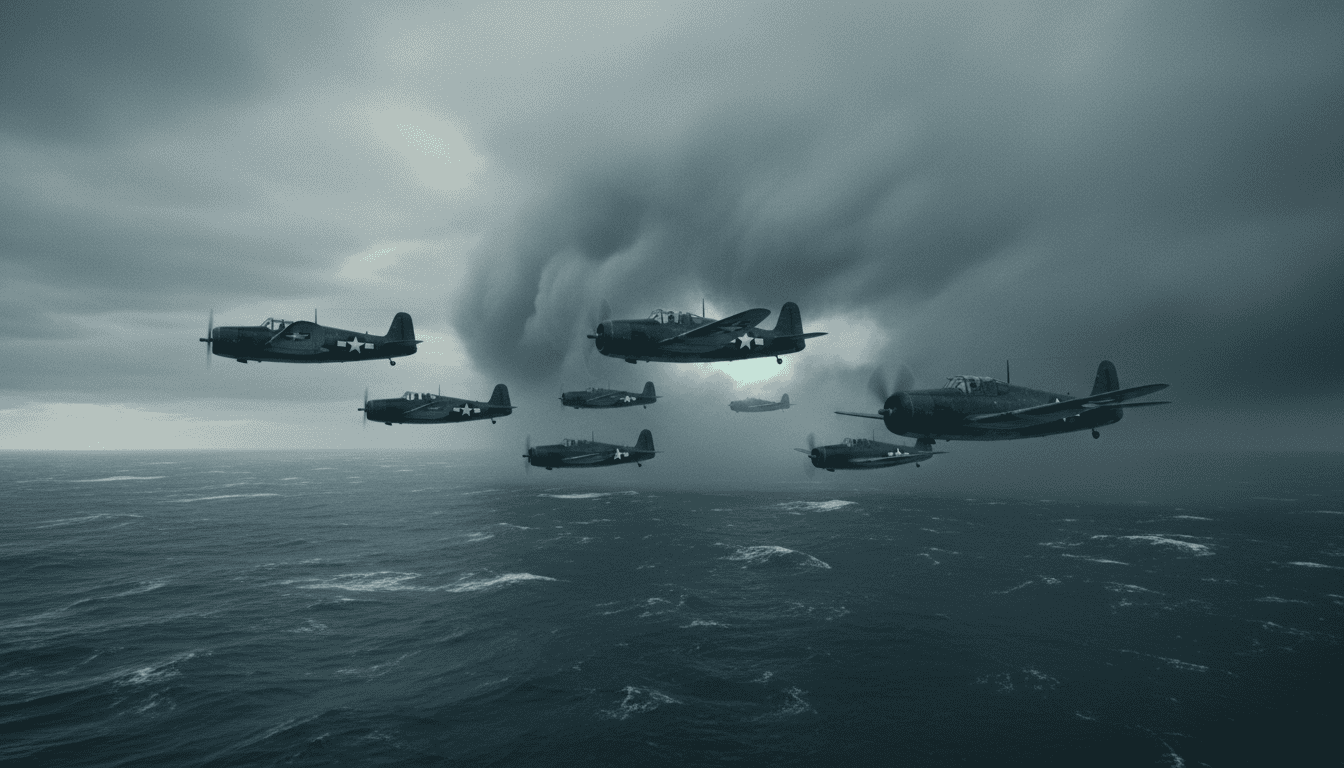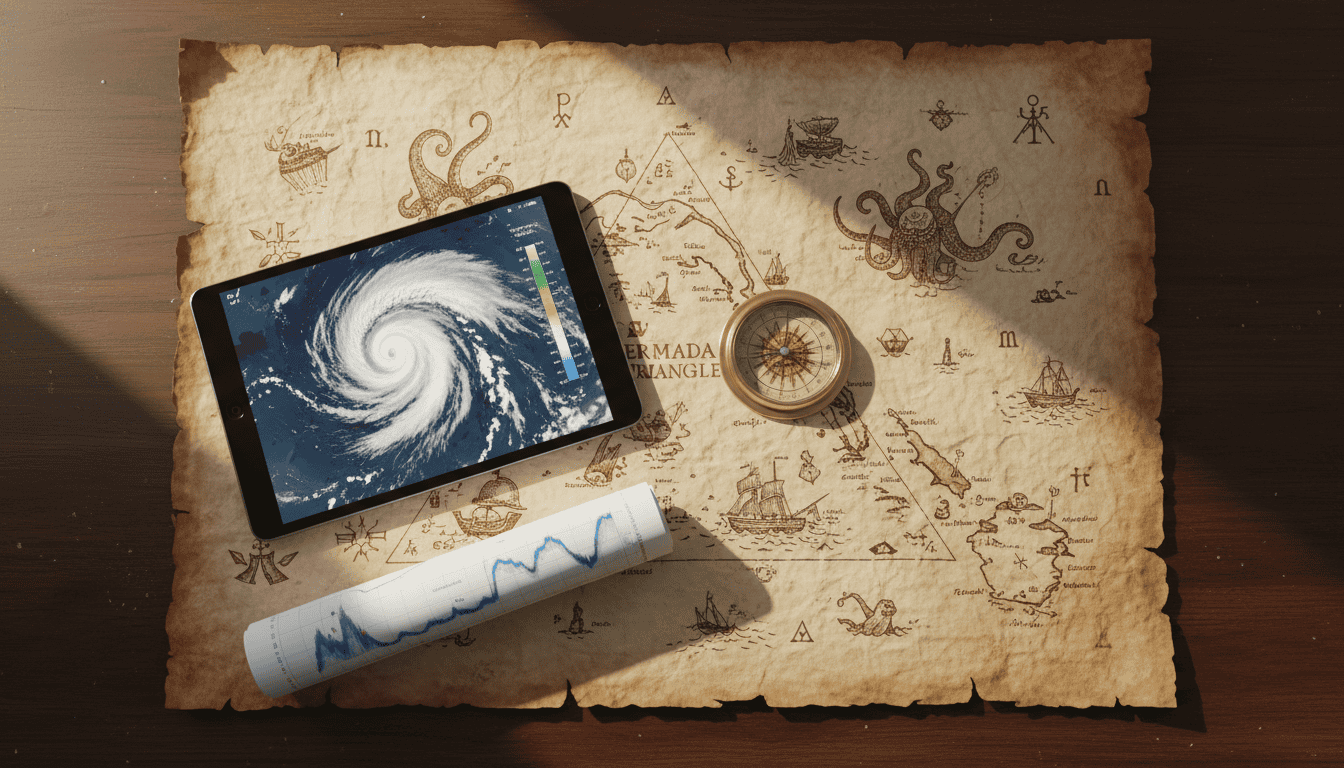Bermuda Triangle Explained: The Truth Behind the Mystery
The Bermuda Triangle has captivated public imagination for decades. This loosely defined region, bounded by Florida, Bermuda, and Puerto Rico, is infamous for the disappearance of numerous vessels. Since the mid-19th century, reports claim over 50 ships and 20 airplanes have vanished without a trace within its expanse. These stories have fueled speculation, cementing its status as an enduring urban legend and leading many to question if more than bad luck is at play.
The most famous incident is the loss of Flight 19 in 1945, when five U.S. Navy torpedo bombers vanished during a routine training mission. The search-and-rescue plane sent to find them also disappeared, adding to the mystery. This event, along with the earlier disappearance of the U.S. Navy cargo ship, the USS Cyclops, in 1918, propelled the legend into popular culture. These high-profile cases became cornerstones of the Triangle’s ominous reputation, fueling theories of supernatural or extraterrestrial involvement.
The geographical boundaries of the Bermuda Triangle are not officially recognized or universally agreed upon. Estimates of its size vary, ranging from 500,000 to over 1.5 million square miles, making it difficult to pinpoint the “danger zone.” Many reported incidents occurred within or near the Gulf Stream, a powerful and swift ocean current known for its turbulent nature. This current can quickly disperse accident debris, making wreckage incredibly difficult to locate and leaving a legacy of mystery.
Key Takeaways
- The Bermuda Triangle is an unofficial, loosely defined area, not a formally recognized geographical region by government bodies like the U.S. Board on Geographic Names.
- The legend is fueled by sensationalized stories of famous disappearances, such as Flight 19, which often omit plausible explanations like bad weather, human error, or equipment failure.
- There are numerous scientific and natural explanations for the incidents, including the powerful Gulf Stream current which disperses wreckage, sudden extreme weather, and potential for rogue waves.
- Official organizations like the U.S. Coast Guard and NOAA state that the number of disappearances is not statistically unusual compared to other heavily traveled parts of the ocean.
- Human error, combined with the high volume of air and sea traffic, is a primary explanation for accidents, rather than supernatural or paranormal forces.
- The mystery is sustained more by popular culture and embellished retellings than by factual evidence, as official investigations consistently point to conventional causes.
Defining The Infamous Triangle
The Bermuda Triangle is a loosely defined stretch of the North Atlantic Ocean with corners generally placed at Miami, Florida; San Juan, Puerto Rico; and the island of Bermuda. This name does not appear on official maps, as it is not a recognized geographical region by the U.S. Board on Geographic Names. The term was popularized in the mid-20th century to describe an area where many ships and planes had supposedly vanished under mysterious circumstances. This imaginary triangle cuts through one of the world’s most heavily traveled shipping lanes and flight paths, connecting North America, Europe, and the Caribbean.
The Triangle’s boundaries are not universally agreed upon, leading to a wide variation in its perceived size. Estimates of its area range from 500,000 to over 1.5 million square miles, depending on which disappearances an author includes. This ill-defined scope overlaps with regions known for extreme weather, rogue waves, and the powerful Gulf Stream current. Many famous incidents attributed to the Triangle, such as the disappearance of the USS Cyclops, occurred within this challenging expanse of ocean where natural hazards are abundant.
Famous Cases Fueling The Myth

The legend of the Bermuda Triangle was cemented by the disappearance of Flight 19 on December 5, 1945. Five U.S. Navy Avenger torpedo bombers vanished during a training mission from Florida, with the flight leader reporting malfunctioning compasses before radio contact was lost. Tragically, a Martin Mariner search-and-rescue plane with 13 crewmen also disappeared that night. The loss of six aircraft and 27 men in one day created a mystery that has captivated the public for decades.
The vanishing of the USS Cyclops in March 1918 is another cornerstone of the Triangle’s mythology. The Navy cargo ship, carrying over 300 crew and passengers, disappeared between Barbados and Baltimore without sending a distress signal. Its disappearance without a trace remains one of the largest non-combat losses of life in U.S. Naval history. Over time, these stories have been retold and embellished, often omitting plausible explanations like equipment failure or severe weather, amplifying the sense of mystery.
Other disappearances attributed to the region, such as the losses of the passenger planes Star Tiger and Star Ariel in the late 1940s, follow a similar pattern of vanishing without a definitive explanation. These incidents often occurred before modern tracking technology, leaving investigators with little evidence to analyze. The area is known for turbulent and unpredictable weather, including sudden, violent storms and waterspouts. The powerful Gulf Stream current can also quickly disperse wreckage, making it nearly impossible to locate debris and determine what happened.
Science Behind The Superstition
Many mysteries can be attributed to the region’s volatile natural forces. The Bermuda Triangle sits in the path of the Gulf Stream, a swift ocean current that can disperse wreckage, making debris from a lost ship or plane nearly impossible to locate. The area is also known for sudden, violent thunderstorms and hurricanes, creating treacherous conditions for any unprepared vessel or aircraft. These environmental factors provide a logical basis for many disappearances.
Unique geological and oceanographic phenomena offer other explanations. Scientists have identified the potential for “rogue waves,” massive walls of water that can appear without warning and overwhelm even the largest ships. Another theory involves large eruptions of methane gas from the ocean floor, which could decrease water density, causing a ship to lose buoyancy and sink in seconds. While rare, these documented natural events provide plausible scenarios for sudden disappearances.
The most common explanation for incidents in the Triangle is human error combined with statistical probability. The region is one of the world’s most heavily traveled shipping lanes and air routes, so a higher number of accidents is statistically likely. Investigations into famous cases, like the 1945 disappearance of Flight 19, often reveal a combination of navigational errors, equipment malfunction, and deteriorating weather. Official organizations like the U.S. Coast Guard do not recognize the Bermuda Triangle as a uniquely hazardous area, attributing losses to causes found worldwide.
The Official Verdict And Lack Of Evidence

Despite its legendary status, the Bermuda Triangle is not recognized as a uniquely hazardous place by the U.S. Navy or the U.S. Board on Geographic Names. Government agencies like the National Oceanic and Atmospheric Administration (NOAA) state the number of disappearances is not statistically greater than in any other heavily traveled part of the ocean. In their view, no evidence suggests mysterious or unusual forces are at work within these boundaries. Investigations conclude that incidents in the region result from known environmental factors and human error.
Scientific analysis points to natural phenomena rather than paranormal activity. The region contains the Gulf Stream, a powerful ocean current that can quickly disperse wreckage, making it difficult to locate. This area is also known for volatile weather, including sudden, intense thunderstorms and waterspouts that threaten both ships and aircraft. The presence of some of the world’s deepest ocean trenches means any sunken vessel would be nearly impossible to recover. These environmental conditions provide logical explanations for many reported incidents.
Conclusion
The legend of the Bermuda Triangle is built more on sensationalism than substance. Many famous disappearances have been embellished over time, with details about bad weather or human error often omitted from popular retellings. Researchers have found that many incidents attributed to the Triangle either occurred far outside its borders or were solved without receiving the same media attention. The narrative of a paranormal hotspot crumbles when scrutinizing original reports instead of second-hand accounts. This pattern of exaggeration and misinformation is the foundation of the mystery.
Stripped of supernatural speculation, incidents in the region can be attributed to environmental factors and navigational challenges. The area is known for volatile weather, including sudden thunderstorms and hurricanes that form with little warning. The strong Gulf Stream current can also disperse wreckage, making it nearly impossible to find any trace of a downed aircraft or sunken vessel. Given the high volume of traffic, the number of disappearances is not statistically unusual. These logical explanations provide a more plausible reality than theories involving mysterious forces.
Frequently Asked Questions
1. What exactly is the Bermuda Triangle?
The Bermuda Triangle is a loosely defined region in the western North Atlantic Ocean, infamous for the disappearance of many vessels. Since the mid-19th century, reports claim over 50 ships and 20 airplanes have vanished there, cementing its status as an enduring urban legend.
2. Where is the Bermuda Triangle located?
The Triangle’s corners are generally placed at Miami, Florida; the island of Bermuda; and San Juan, Puerto Rico. Its geographical boundaries are not officially recognized, and its estimated size varies from 500,000 to over 1.5 million square miles.
3. What is the most famous disappearance in the Bermuda Triangle?
The most famous incident is the loss of Flight 19 in 1945, when five U.S. Navy torpedo bombers vanished during a training mission. The mystery deepened when the search-and-rescue plane sent to find them also disappeared.
4. Are there any natural explanations for the strange events?
Yes, many reported incidents occurred near the Gulf Stream. This powerful ocean current is known for its turbulent nature and can quickly disperse debris, making it very difficult to locate wreckage from an accident.
5. Is the Bermuda Triangle an officially recognized place?
No, the geographical boundaries of the Bermuda Triangle are not officially recognized or universally agreed upon. It is an informal designation that became part of popular culture, not an official geographical or maritime zone.
6. What other major incidents define the Triangle’s reputation?
Besides Flight 19, the disappearance of the U.S. Navy cargo ship, the USS Cyclops, in 1918 is a cornerstone of the legend. These high-profile cases have propelled the Triangle’s ominous reputation and fueled theories of unusual involvement.
7. Why do so many people believe something supernatural is happening there?
The number of stories combined with the lack of wreckage or clear explanations for high-profile cases has led to widespread speculation. These enduring mysteries have fueled theories of supernatural or extraterrestrial involvement for decades.







